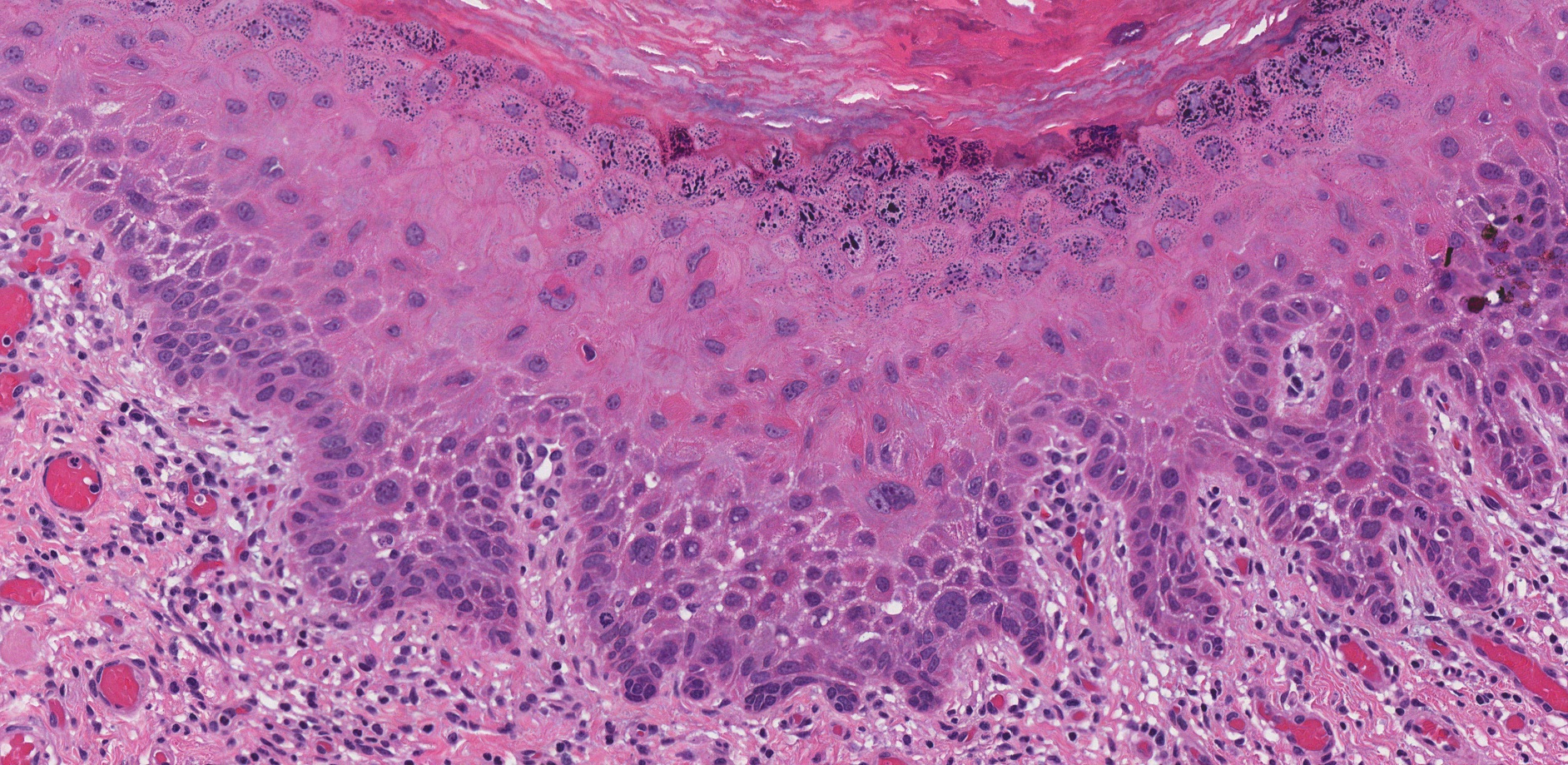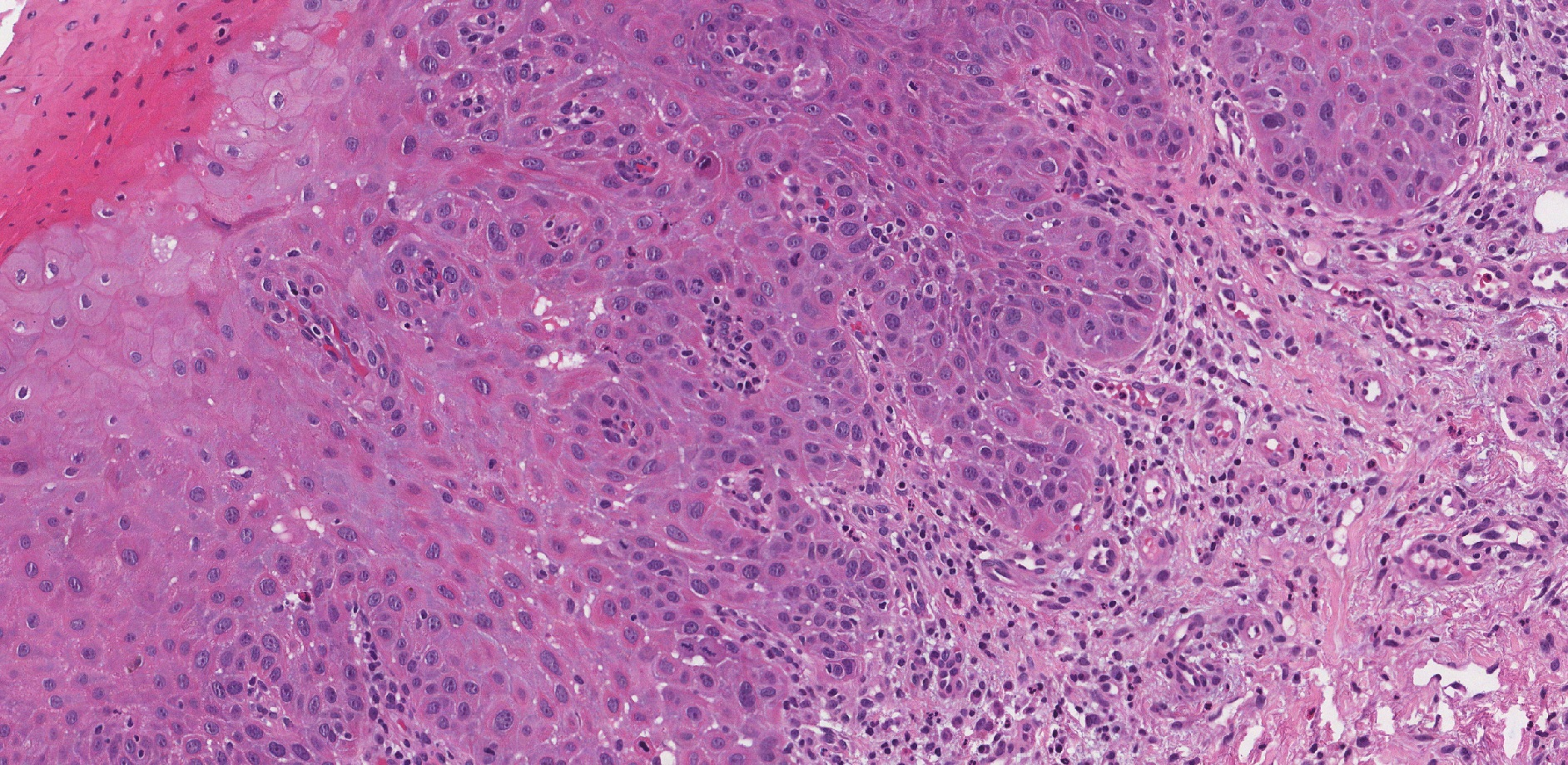by Jason Wasserman MD PhD FRCPC
April 26, 2023
What is squamous dysplasia?
Squamous dysplasia is a precancerous change involving an area of the body covered by squamous cells. If left untreated, squamous dysplasia can turn into a type of cancer called squamous cell carcinoma over time.

What causes squamous dysplasia?
The cause of squamous dysplasia depends on where in the body the disease is located. For example, squamous dysplasia involving the oral cavity, larynx, lungs, and esophagus is frequently caused by smoking tobacco or excessive alcohol consumption. However, the most common cause of squamous dysplasia involving the cervix and anal canal is infection with human papillomavirus (HPV).
Where is squamous dysplasia normally found?
Common locations for squamous dysplasia include the oral cavity, larynx (throat), esophagus, lungs, skin, cervix, and anal canal. However, squamous dysplasia can start anywhere in the body where squamous cells are normally found.
Is squamous dysplasia cancer?
No. Squamous dysplasia is not cancer. However, squamous dysplasia is considered a precancerous condition because it can turn into a type of cancer called squamous cell carcinoma over time.
How do pathologists grade squamous dysplasia?
There are multiple classification systems used to grade squamous dysplasia. The system selected depends on the location of the disease and the preference of the pathologist.
Mild, moderate, and severe squamous dysplasia
A three-level grading system that divides squamous dysplasia into mild, moderate, and severe is commonly used for disease in the oral cavity, larynx, and lungs (including the large airways). According to this system, mild squamous dysplasia is associated with the lowest risk of turning into cancer while severe squamous dysplasia has the highest risk. For this reason, patients with severe squamous dysplasia are often offered treatment to remove the area of the disease.

Low and high grade squamous dysplasia
A two level grading system that divides squamous dysplasia into low and high grade dysplasia is used by some pathologists for disease in the oral cavity, larynx, and lungs (including the large airways). According to this system, low grade squamous dysplasia is associated with the lowest risk of turning into cancer while high grade squamous dysplasia has the highest risk. For this reason, patients with high grade squamous dysplasia are often offered treatment to remove the area of disease.
Low grade squamous intraepithelial lesion (LSIL) and high grade squamous intraepithelial lesion (HSIL)
A two level grading system is used for squamous dysplasia caused by human papillomavirus (HPV). This system which is typically applied to diseases involving the cervix, vagina, penis, and anal canal, divides squamous dysplasia into low grade squamous intraepithelial lesion (LSIL) and high grade squamous intraepithelial lesion (HSIL). According to this system, LSIL is associated with the lowest risk of turning into cancer while HSIL has a much higher risk. For this reason, patients with HSIL may be offered treatment to remove the area of disease, however, the decision depends on a variety of factors including the location of the disease and the age of the patient.




